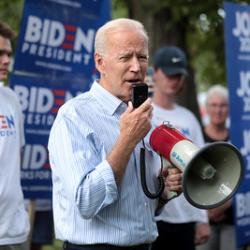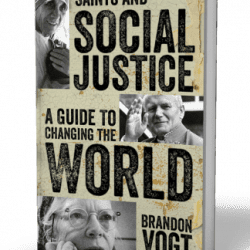Our friend and contributor Rick Garnett recently linked to a fascinating essay on the common good over at Mirror of Justice. The essay is called “In Search of the Common Good: the Catholic Roots of American Liberalism,” and was written by Lew Daly. Daly’s basic thesis is that Roosevelt’s New Deal was not only underpinned by Catholic social teaching, but that the whole constitutional mentality shifted from a pure laissez-faire liberalism to the common good, at least for a time before the clock turned back.
He first describes what he means by “laissez-faire constitutionalism”, the legal approach that dominated the period before the New Deal. The philosophy was simple: “juxtaposed with the forced inequalities of slavery, rewards resulting from juridically free exchange could only reflect natural differences in the skill, intelligence, effort etc., of the individual market actors”. Market outcomes were deemed not only efficient but also morally justified. This is the classic laissez-faire liberalism that was roundly condemned by the Church in the 19th and 20th centuries. Although Daly does not examine its roots, I think we can trace them to both Protestantism and the Enlightenment (these themselves are related). For the Protestant, the community is replaced by the individual and a personal relationship with God. The notion of law being an “ordinance of reason for the common good” (Aquinas) is replaced by a social contract designed to keep the peace in a “war of all against all” (Hobbes). The ethic became utilitarian, the greatest good for the greatest number, and what better outcome than the free market that– according to the (mathematical) welfare theorems– leads to the most efficient allocation of resources? Finally, all we need to do is toss in some Calvinist predestination and we can jump from the most efficient outcome to the morally superior outcome.
This was the established constitutional philosophy. Daly quotes the case of Lochner v. New York, a 1905 Supreme Court decision casting aside a law setting maximum working hours as the archetypal case of the time. The argument was that the “liberty” of employers was violated by such laws. Daly’s paper argues strongly that the “progressive” reaction to this ideology was heavily influenced by Catholic social teaching, especially through the work of Fr. John Ryan. It was this aspect of the paper that drew the ire of some critics. In particular, Joseph Bottum notes that so-called progressives like Oliver Wendell Holmes (who dissented in Lochner) were also busy defending eugenics. Yes, the division between progressivism and Catholic social teaching was there from the beginning, and the rift would only grow. But this is not the most important contribution of Daly’s essay. Instead, his key point is that in the recent era, laissez-faire liberalism has returned with a vengeance, crowding out the common good– and this affects both sides of the current American political spectrum.
Daly argues the ideas that came to the fore in the 1960s– ideas about sexual freedom, expansive rights to privacy, and extreme secularism– owe a lot to pre-New Deal laissez-faire constitutionalism. As he notes, these ideas “shifted the whole framework of rights from the worker and his family and community, viewed as something in need of protection, to the detached individual of liberal theory, regardless of economic position or need”. In other words, the notion of the common good was replaced with “an ethic of fragmented private liberty”. And of course, the ultimate embodiment of this “progressive” reactionary approach was the Roe v. Wade decision in 1973. Daly is quite blunt here: this is a throwback to the age of Lochner, as “the same due process of liberty that had shielded business from legislative reform at the beginning of the century was now being used to install a new laissez-faire supremacy at the heart of democracy”. It is a return to the individual social contract underpinned by a utilitarian ethic.
Daly concludes his essay with perhaps his most profound observation of all: it is surely no coincidence that as the common good withered away in conventional political discourse, “big business re-established its dominance in American politics”. At this precise instant, income inequality started to rise precipitously, and would soon reach the levels of the last gilded age, when the first incarnation of laissez-faire liberalism reigned supreme. The notion of a family living wage became a quaint anachronism, and living standards stagnated, again starting in this period. Yet again, the government backed away from the economy, fearful of interfering with the liberty of the free market. And we are pretty much back where we stated.
This is exactly where critics like Bottum go astray. Bottum takes issue with Daly’s narrative by arguing that there was an economic disaster in the 1970s, prompting a Reaganite belief that ” a healthy economy can bring about new sources of finance… new wealth can benefit the whole of society”. Except that what he asserts is not what happened. His attempt to defend the Reagan restoration by appealing to Catholic social teaching falls flat on its face. He even gets the economics wrong: the economic disaster in the 1970s was the result of monetary and fiscal policy mistakes in responding to an unprecedented aggregate supply shock. Monetary policy lost credibility and inflation sky-rocketed. But since then, a new inflationary environment was born, and low and stable inflation is a given (so far!). Reagan and his successors’ preferential option for the rich had hardly any effect on macroeconomic stability, little effect on growth, but a huge impact on distribution. Bottom fails to realize that he is defending the twin sister of the laissez-faire liberalism that underpins Roe. And that’s not very Catholic at all.
















